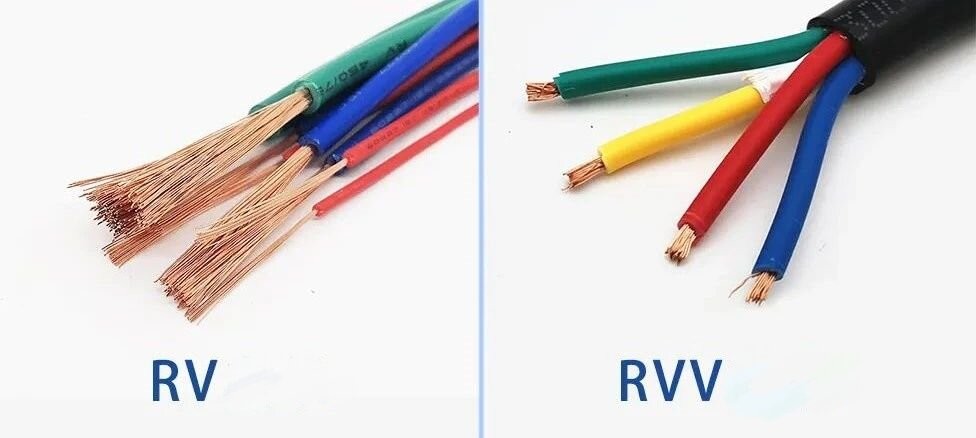

1. The product name is different
RV is a model of wire and cable, its full name is copper core PVC insulated connecting flexible wire and cable. RV wires and cables adopt a soft structure design with a small conductor bending radius and are suitable for installation in humid and oily installation locations.
The full name of RVV cable is copper core PVC insulated PVC sheathed flexible cable, also known as light PVC sheathed flexible cable, commonly known as soft sheathed wire, which is a type of sheathed wire. In fact, RVV wire and cable are two or more RV wires plus a layer of sheath.
2. Different rated cables
RV wires are rated for 450/750V and RVV wires are rated for 300/500V.
3. The core structure is different
RV wires are single-core (multiple) copper wires, while RVV wires are multi-core copper wires made from two or more RV wires.
4. Different sheath structures
There is no sheathing layer outside the RV cable, and there is a layer of PVC sheath outside the RVV cable. The main function is to protect the inner protective layer of the cable from mechanical extrusion and chemical corrosion, and to play a role in tensile, compressive and oxidation resistance.
5. Different colors
The colors of RV wires include red, blue, white, green, brown, gray, black, etc. RVV wires are generally available in black and white.
6. Different uses
RV wires are widely used in the field of industrial power distribution. They are especially suitable for flexible installation sites with strict requirements, such as electrical control cabinets, distribution boxes and various low-voltage electrical equipment. They can be used for the transmission of power, electrical control signals and switching signals.
RVV wires are mainly used in power lines, control lines and signal transmission lines for electrical appliances, instruments, electronic equipment and automation devices. They can be specifically used in anti-theft alarm systems, building intercom systems, etc.
From: Linkedin